Radioactivity in Oily Sludge and Produced Waste Water from Oil: Environmental Concerns and Potential Remedial Measures
Abstract
:1. Introduction
2. Results and Discussion
2.1. Radium in Waste Water from Oil
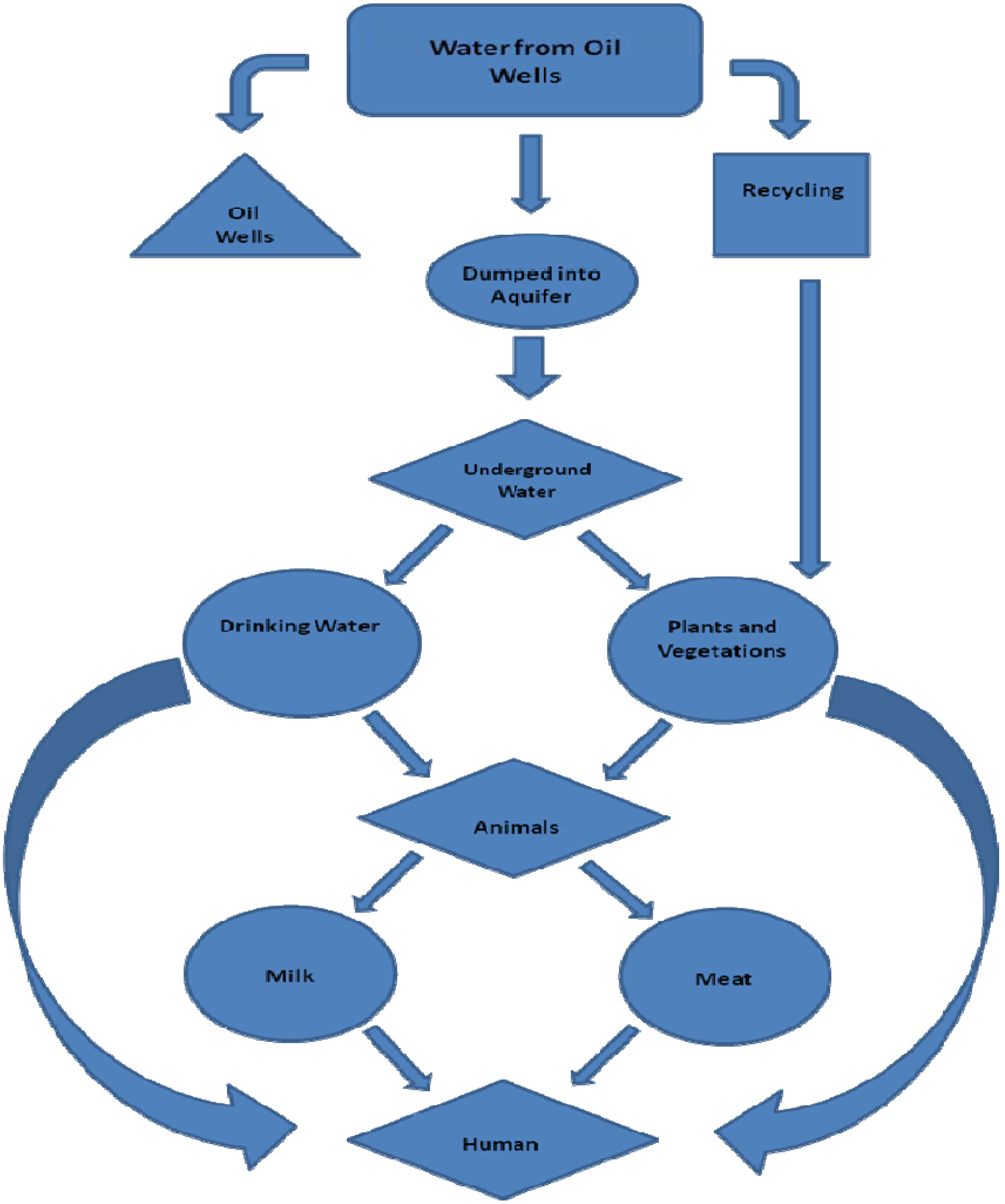
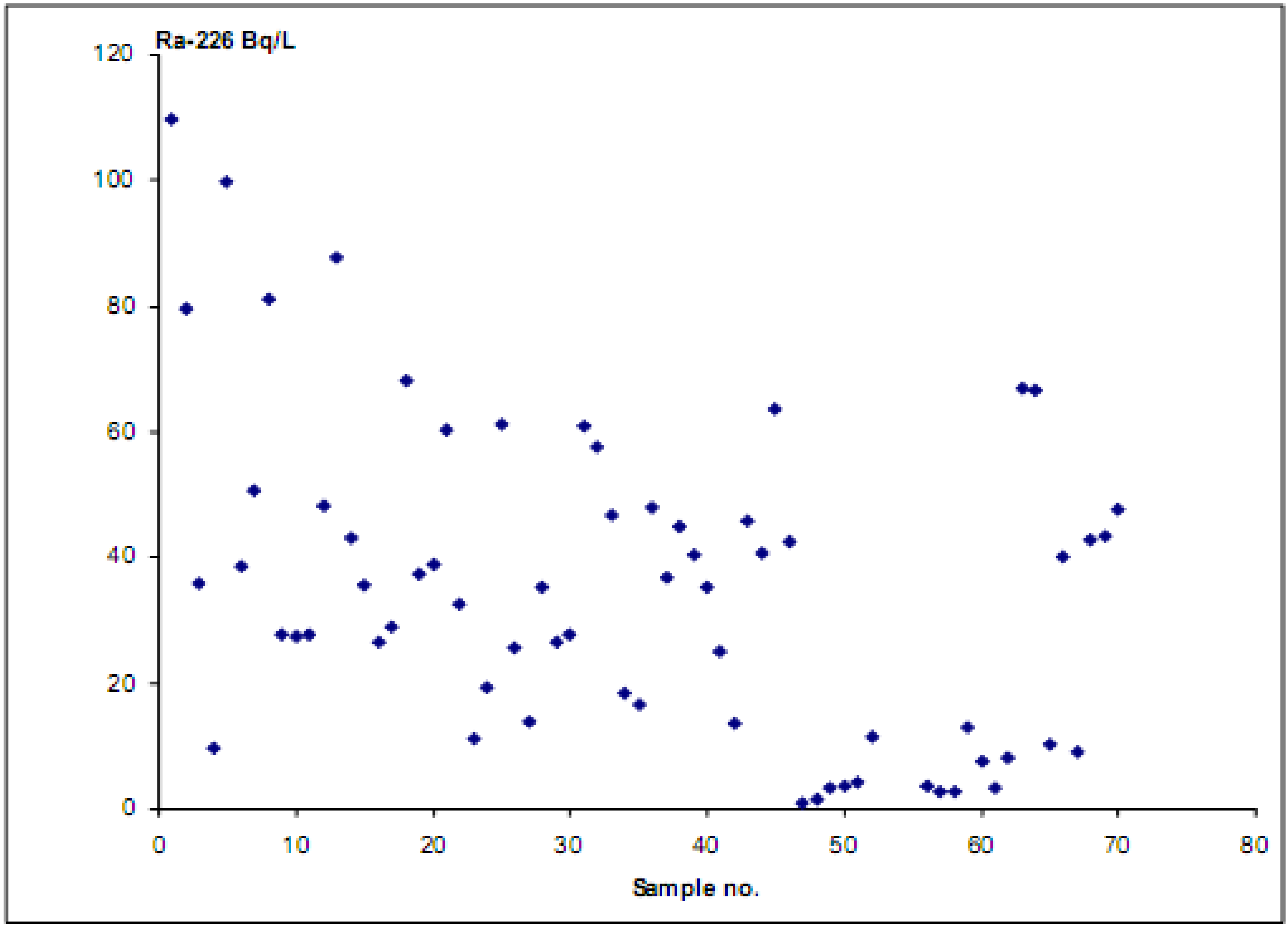
2.2. 40K in Produced Waste Water
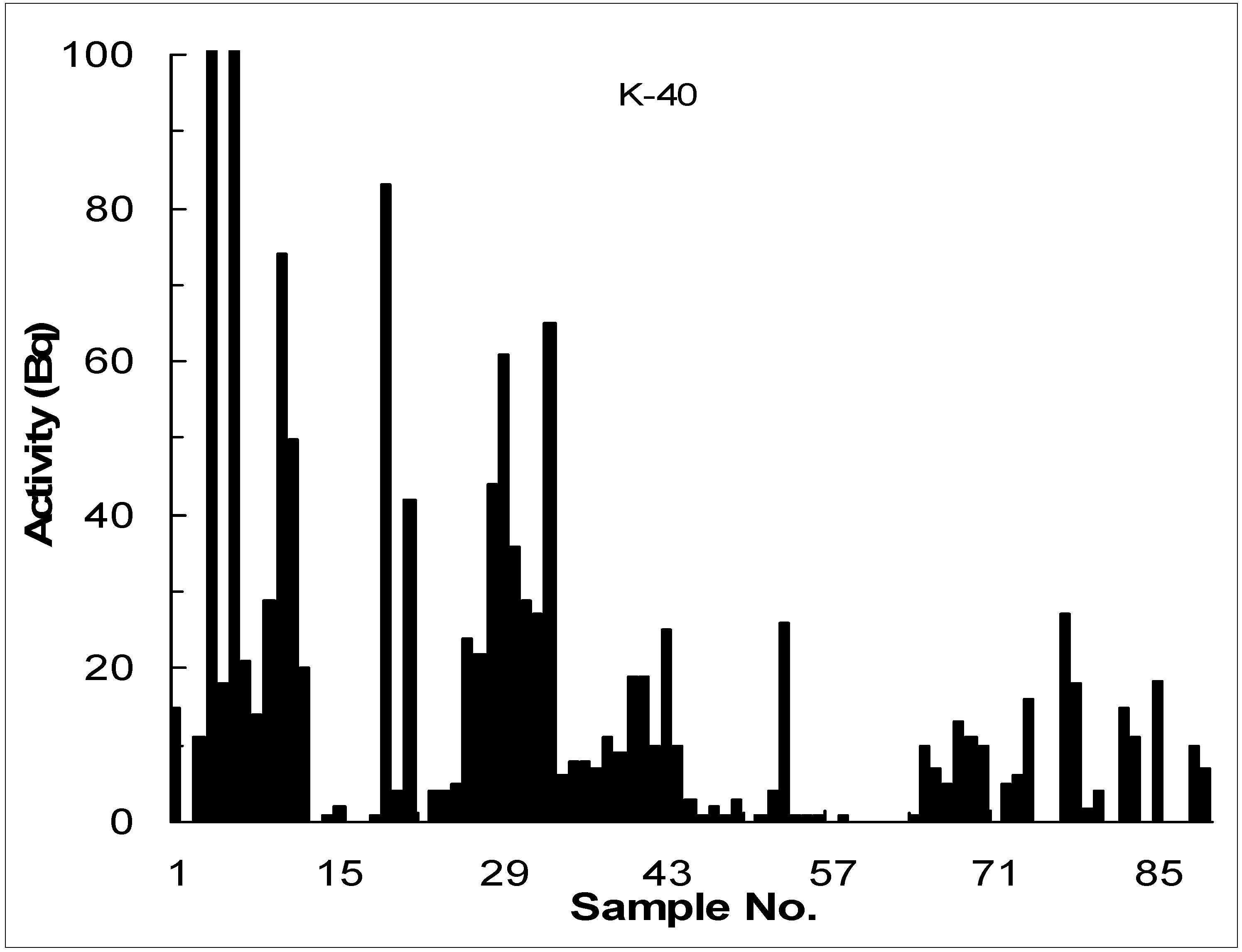
2.3. Actinium in Oily Sludge

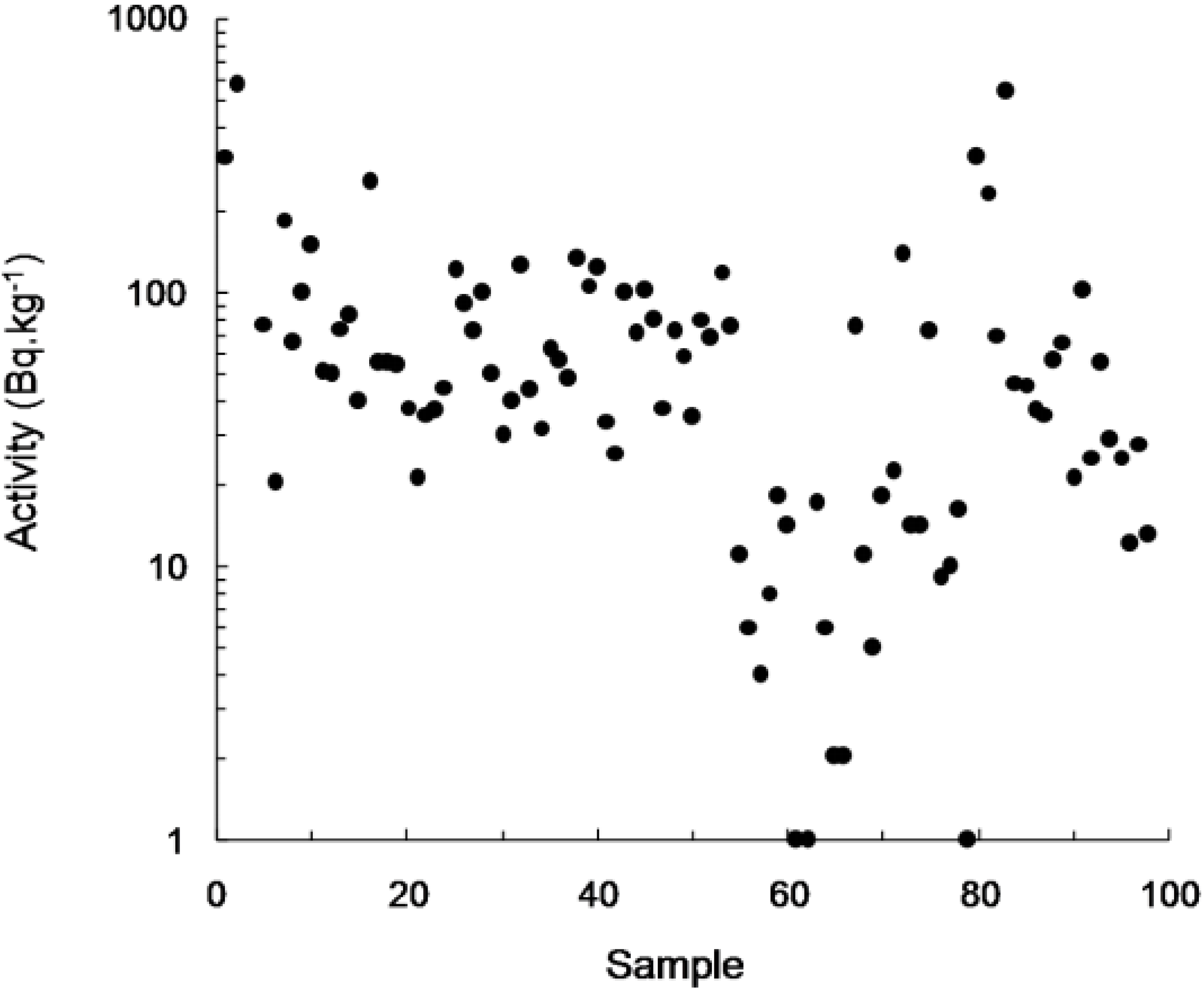
2.4. Environmental Concerns/Potential Remedial Measures
- (i)
- Percolation of the water table by rainwater, irrigation and dumping of waste water has been previously studied [19]. The potential contamination of local water bodies (such as streams, rivers and underground supplies) from such infiltration can become a serious problem, especially if the radioactive levels are elevated. A remedial measure to inform the community of general pollution is already in place; and because of an increasing awareness to possible environmental contamination, the impact of the pollution on the general community has been minimized [20]. As a result, the water in overhead streams near villages is not as widely used for drinking purposes, but mainly for cleaning clothes, utensils and certain consumables such as vegetables. These activities can be further reduced as more environmental studies are conducted in the area, and more environmental awareness is disseminated among the community [20]. The impact on livestock and crops is more complex. Goats and cattle consume the water at some sites, and could subsequently propagate the pollution to mankind.
- (ii)
- The resultant impact of elevated radioactive bioaccumulation is another matter for consideration. Such accumulation could have an unfavourable effect on the biosphere [19]. Therefore, excess bioaccumulation of radioactivity in the food chain (for example) is a potential hazard and deserves further investigation. Of interest is that the deleterious effect on plants is often underrated; but radioactive toxicity in plants can be quite severe, leading to serious disorders [7,8,9]. Bear in mind that natural conservation is attracting global interest and any such contamination can pose a significant threat. These particular problems can be curbed by searching for solutions to deplete the radioactivity to levels below 0.2 Bq/L in waste water. One possible remedial solution that could be seriously considered is to treat the water chemically to remove the undesirable radioactive substances by precipitation or sedimentation. This may not prove to be cost-effective, but is an option to be considered.
- (iii)
- Produced waste water and oily sludge that are contaminated by low-levels of natural radioactivity could also pose a significant threat to wildlife [7,8,9]. Migratory and aquatic birds tend to suffer the most. Accumulation of a thin film of oil on a bird’s feathers could lead to ingestion of oil when it preens its feathers. This could subsequently lead to mortality, especially if the oil is radioactive. Abnormally high levels of salts in produced water can also be lethal to birds. Birds are known to die from sodium toxicity. Ingestion of produced water containing low-levels of radioactivity and high sodium levels can lead to chronic effects. Therefore, the dangers of exposure to radioactive contamination cannot be underestimated and suitable measures should be adopted to curb any potential hazard to wildlife.
- (iv)
- From the perspective of public exposure the hazard is relatively low and within the permissible dose so there is no serious concern for the people who handle and dispose the waste water [12]. However, these workers would be exposed to the low-level radiation, which is cumulative on a continuous basis, and this is undesirable. Genetic damage involving low doses of radiation over an extended period is well documented [8,9], and cannot be ignored.
3. Experimental Section
3.1. Sample Collection and Counting
3.2. Instrumental Performance
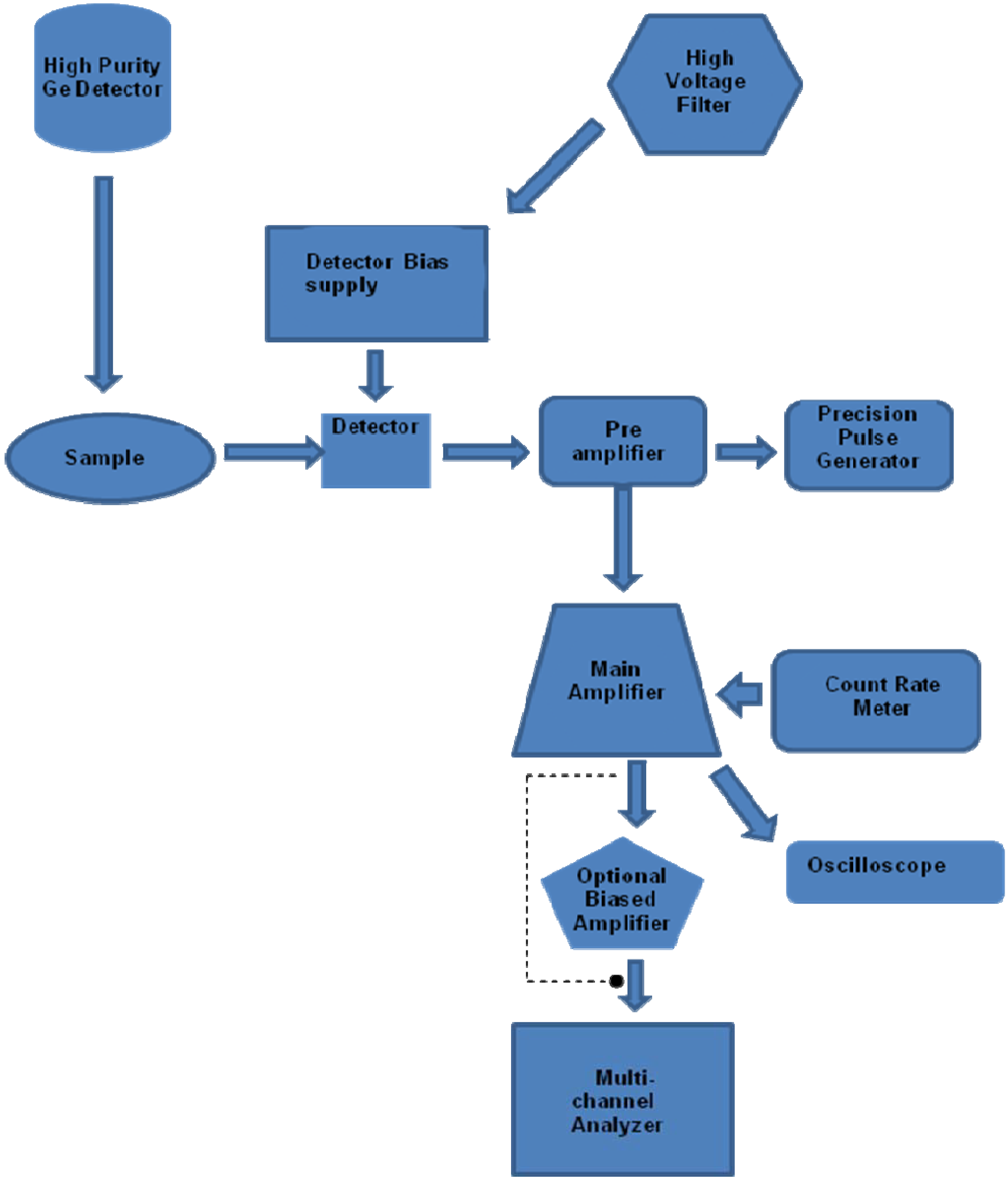
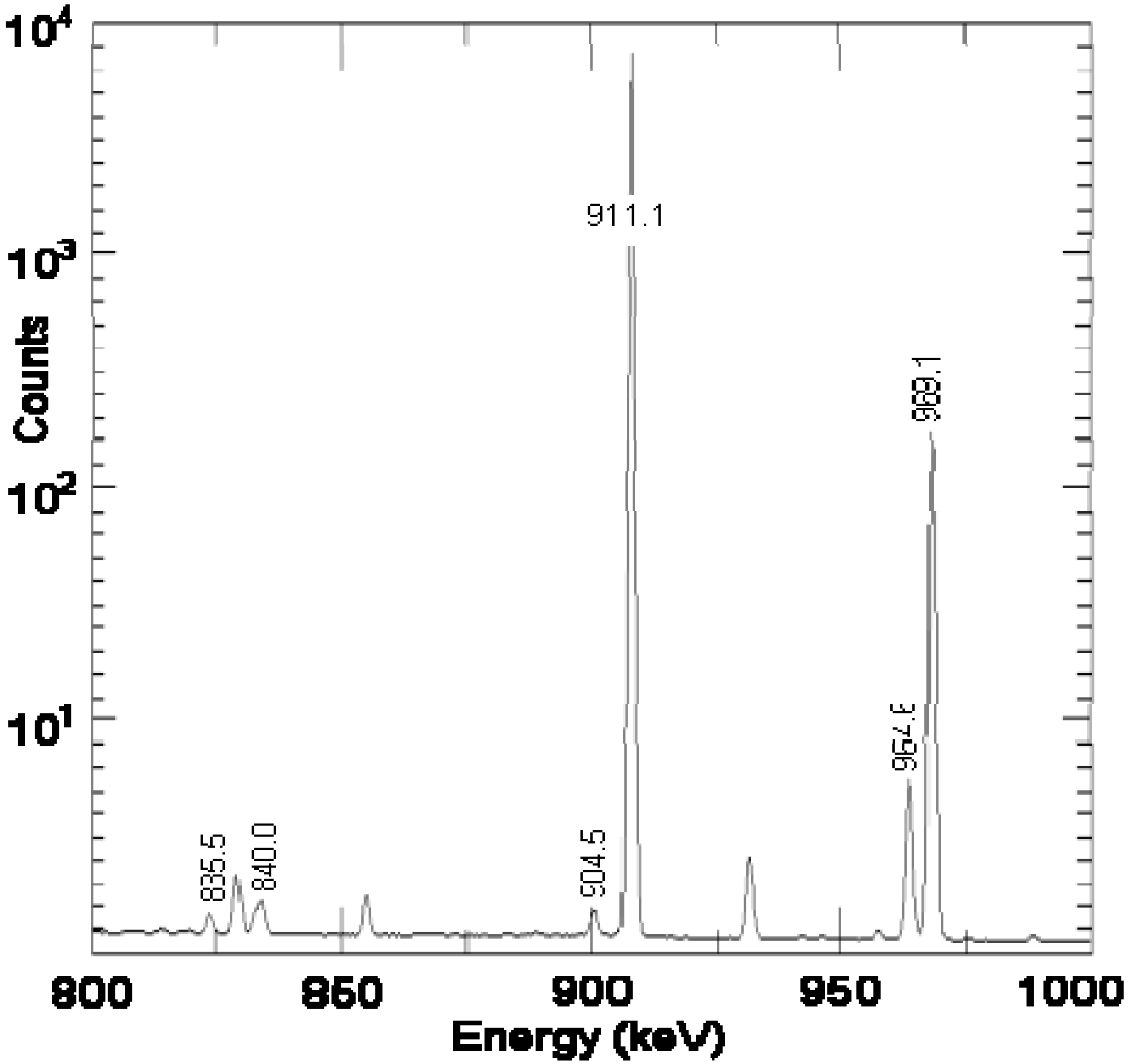
| Measurement | 228Ac 911 keV γ-ray | 226Ra 186 keV γ-ray | 40K 1,461 keV γ-ray |
|---|---|---|---|
| 1 | 1,026 | 518 | 1,530 |
| 2 | 1,038 | 529 | 1,527 |
| 3 | 1,019 | 520 | 1,525 |
| 4 | 1,025 | 520 | 1,522 |
| 5 | 1,029 | 514 | 1,535 |
| 6 | 1,040 | 528 | 1,528 |
| Mean ± RSD | 1,030 ± 0.78% | 522 ± 1.12% | 1,528 ± 0.29% |
4. Conclusions
Acknowledgements
References
- Al Taie, H.; Pickersgill, J.; Al Taie, N. Oman: A Comprehensive Guide to the Sultanate of Oman; Al Roya Publishers: Muscat, Oman, 1999; pp. 370–372. [Google Scholar]
- Barnett, J.; Holbert, K.; Stewart, B.; Hood, W. Lung dose estimates from 222Rn in Arizona groundwater based on liquid scintillation measurements. Health Phys. 1995, 68, 699–703. [Google Scholar] [CrossRef] [PubMed]
- Baggoura, B.; Noureddine, A.; Benkrid, M. Level of natural and artificial radioactivity in Algeria. Appl. Radiat. Isotopes 1998, 49, 867–873. [Google Scholar] [CrossRef]
- Bou-Rabee, F. Soil radioactivity atlas of Kuwait. Environ. Int. 1997, 23, 5–15. [Google Scholar] [CrossRef]
- Chang, R. Chemistry; McGraw-Hill: Boston, MA, USA, 2004; pp. 148–153. [Google Scholar]
- Chase, R.; Rabinowitz, L. Radioisotope Methodology; Butterworth Scientfic Publications: Philadelphia, PA, USA, 1960; pp. 163–165. [Google Scholar]
- De, A.K. Environmental Chemistry; Wiley Eastern Limited: New Delhi, India, 1994; pp. 38–42. [Google Scholar]
- Fifield, F.W.; Haines, P.J. Environmental Analytical Chemistry; Blackwell Science: Oxford, UK, 2000; pp. 123–128. [Google Scholar]
- Harrison, R.M. Understanding Our Environment; The Royal Society of Chemistry: Cambridge, UK, 1998; pp. 86–93. [Google Scholar]
- Manahan, S.E. Environmental Chemistry; Lewis Publishers: Boca Raton, FL, USA, 1994; pp. 183–186. [Google Scholar]
- Mango, H. Elevated levels of groundwater radioactivity in southwestern Vermont. In Proceedings of the Annual Denver Meeting, Denver, CO, USA, 7–10 November 2004; pp. 242–248.
- Salih, F.M.; Pillay, A.E.; Jayasekara, K. 7Be levels in sewage sludge: A baseline study. Instrum. Sci. Technol. 2004, 32, 433–444. [Google Scholar] [CrossRef]
- Faure, G. Principles of Isotope Geology; John Wiley and Sons: New York, NY, USA, 1968; pp. 84–88. [Google Scholar]
- De Moraes, M.A.; Daltro, T.F.L. Environmental gamma radiation and natural radioactivity in soils in Centro Experimental Aramar (CTMSP-Brazil). Radiat. Prot. Dosimetry 2000, 87, 207–211. [Google Scholar] [CrossRef]
- Miller, R.L.; Sutcliffe, H., Jr. Occurrence of Natural Radium-226 Radioactivity in Ground Water of Sarasota County, Florida; U.S. Geological Survey Water-Resources Investigations Report 84-4237; U.S. Geological Survey: Denver, CO, USA, 1985; pp. 34–35. [Google Scholar]
- Shearman, R. The meaning and ethics of sustainability. Environ. Manage. 1990, 14, 1–8. [Google Scholar] [CrossRef]
- Robinson, J.G. The limits to caring: sustainable living and the loss to biodiversity. Conserv. Biol. 1993, 7, 20–28. [Google Scholar] [CrossRef]
- Pillay, A.E.; Williams, J.R.; El Mardi, M.O.; Hassan, S.M.; Al Hamdi, A. Monitoring of Cadmium in “on” and “off” date palms. Environ. Int. 2002, 28, 273–276. [Google Scholar] [CrossRef] [PubMed]
- Reichenbaugh, R.C. Effects on Ground-Water Quality from Irrigating Pasture with Sewage Effluent Near Lakeland, Florida; U.S. Geological Survey Water-Resources Investigations Report 76-108; U.S. Geological Survey: Denver, CO, USA, 1977; pp. 133–138. [Google Scholar]
- Victor, R.; Al-Ujaily, S.R. Water Quality and Management Strategies of Mountain Reservoirs in Arid Northern Oman; Technomic Publishing: Lancaster, UK, 1999; pp. 53–56. [Google Scholar]
© 2010 by the authors; licensee Molecular Diversity Preservation International, Basel, Switzerland. This article is an open access article distributed under the terms and conditions of the Creative Commons Attribution license (http://creativecommons.org/licenses/by/3.0/).
Share and Cite
Pillay, A.E.; Salih, F.M.; Maleek, M.I. Radioactivity in Oily Sludge and Produced Waste Water from Oil: Environmental Concerns and Potential Remedial Measures. Sustainability 2010, 2, 890-901. https://doi.org/10.3390/su2040890
Pillay AE, Salih FM, Maleek MI. Radioactivity in Oily Sludge and Produced Waste Water from Oil: Environmental Concerns and Potential Remedial Measures. Sustainability. 2010; 2(4):890-901. https://doi.org/10.3390/su2040890
Chicago/Turabian StylePillay, Avin E., Fadhil M. Salih, and Muthana I. Maleek. 2010. "Radioactivity in Oily Sludge and Produced Waste Water from Oil: Environmental Concerns and Potential Remedial Measures" Sustainability 2, no. 4: 890-901. https://doi.org/10.3390/su2040890




